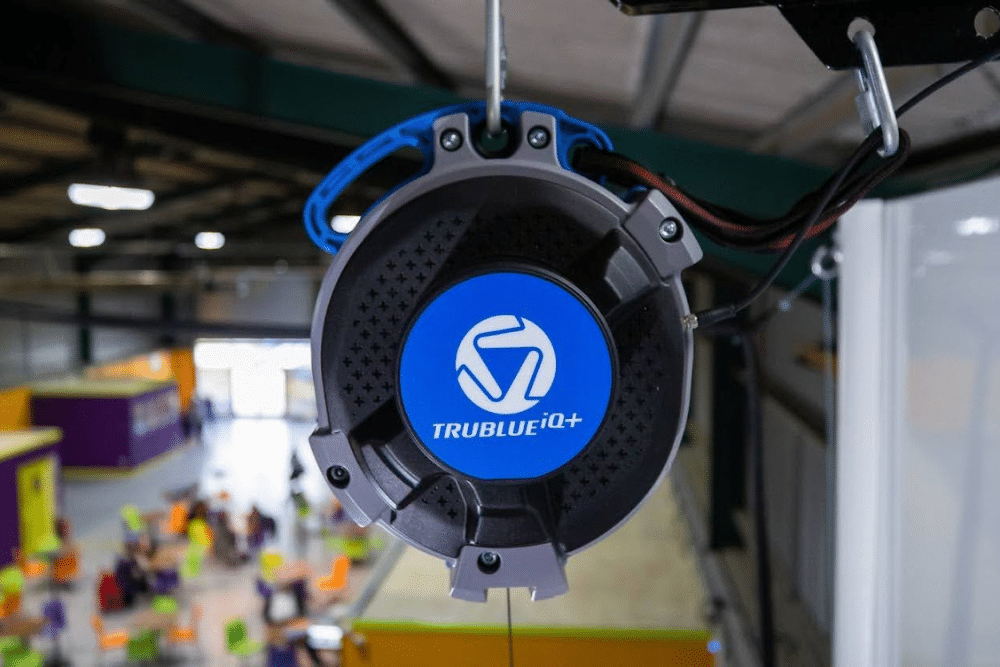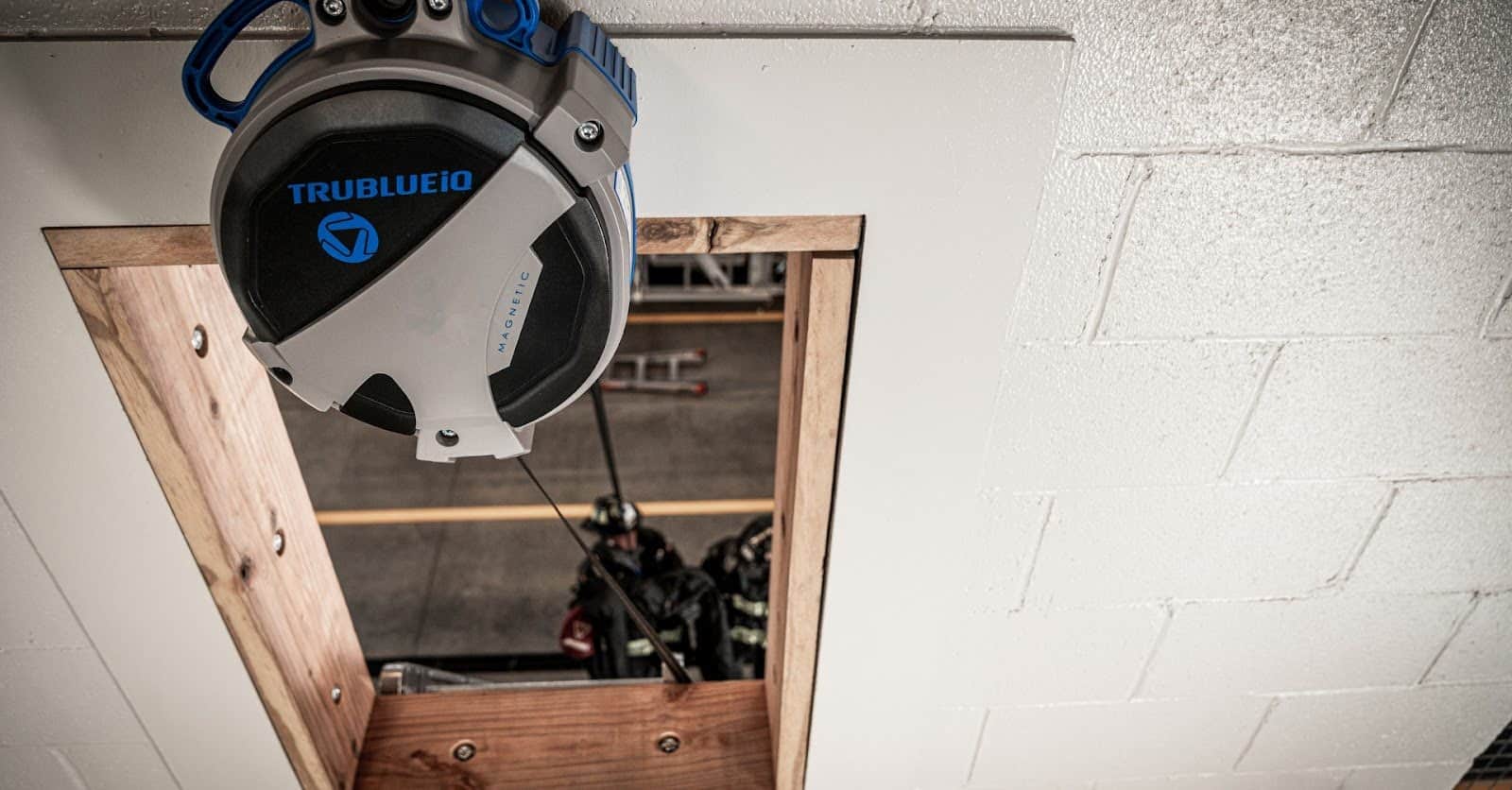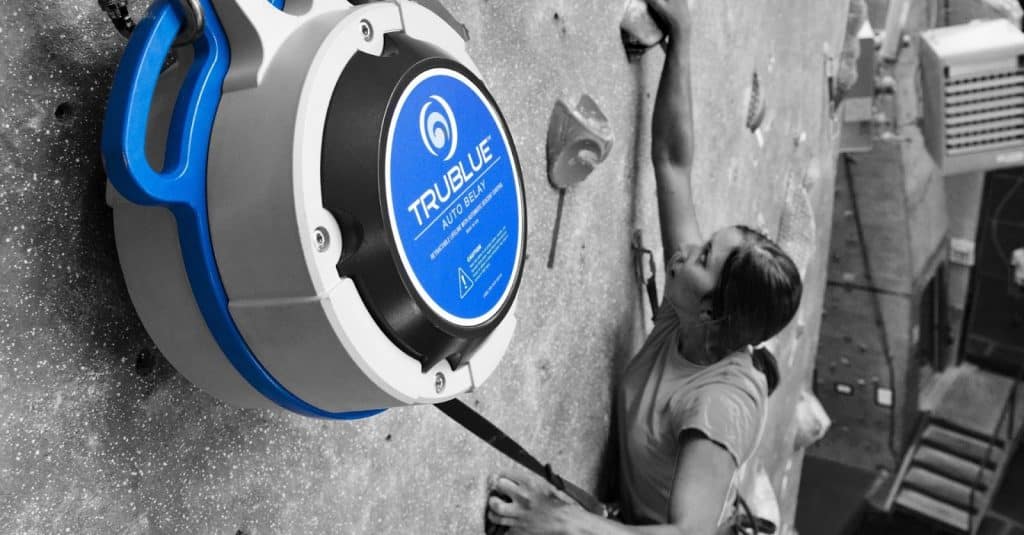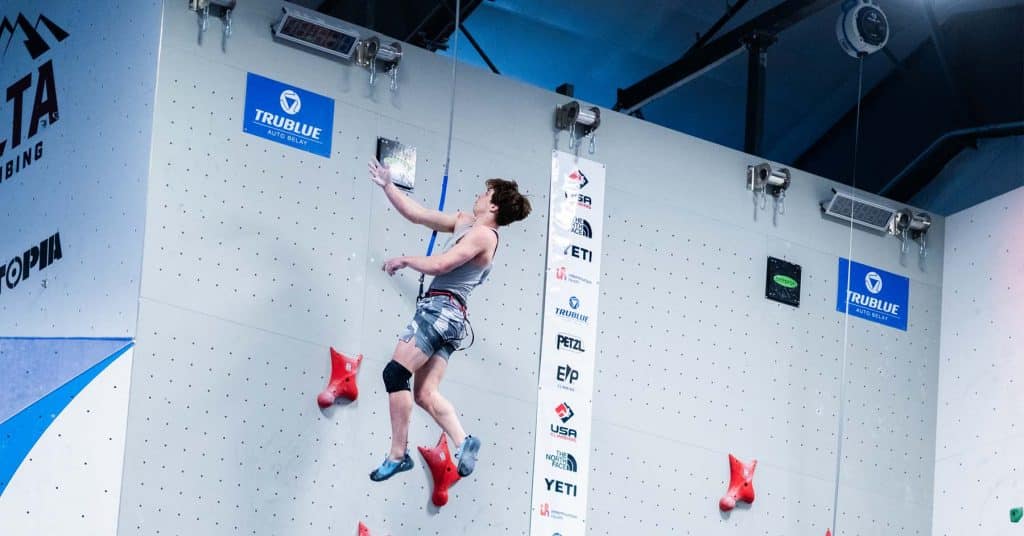Key Takeaways:
- Self-Retracting Lifeline: The self-retracting lifeline (SRL) is a crucial safety device for work at height jobs. It ensures swift fall arrest and minimizes injury risk.
- Head Rush Technologies: Head Rush Technologies' TRUBLUE Professional system exemplifies innovation and reliability in fall protection, bolstered by a patented magnetic braking system for controlled descents.
- Maintenance of SRLs: Regular maintenance and inspection are essential for SRLs to ensure consistent performance and longevity, aligning with Head Rush Technologies' commitment to safety and quality.
In work-at-height scenarios, where the risk is as elevated as the job, the technology and equipment dedicated to ensuring the safety of those brave enough to ascend are essential. Leading the charge in transformative safety solutions is the self-retracting lifeline (SRL), an indispensable device across industries that require aerial operations. At Head Rush Technologies, we understand the criticality of each component that makes work environments safe and empowering for professionals in the field.
At the forefront of workplace safety in "work at height" jobs is the self-retracting lifeline—a marvel of modern engineering designed to arrest falls swiftly and minimize the risk of injury. It's not just about preventing accidents; it's about providing a safety net that allows firefighters, industrial workers, and line trainers to perform their duties confidently and safely.
In this article, we explore the critical role that self-retracting lifelines play in "work at height" jobs, showcasing how Head Rush Technologies, with our trailblazing TRUBLUE systems, is at the vanguard of ensuring safety in industrial training applications through technological innovation.

Defining "Work At Height" Jobs
"Work at height" refers to any task performed where a person is exposed to the risk of falling from an elevated position. This encompasses a wide range of activities across various industries, including construction, maintenance, telecommunications, and emergency services. Essentially, if the work involves being above ground level, whether on scaffolding, ladders, rooftops, or elevated platforms, it falls under the category of work at height.
Key examples include:
- Construction Sites: Workers frequently operate on scaffolds, roofs, or ladders, where falls can occur from significant heights.
- Telecommunications: Technicians climb towers or work on high structures to install or maintain communication equipment.
- Maintenance and Repairs: Tasks such as servicing HVAC systems or repairing building facades often require working from heights.
- Emergency Services: Firefighters and rescue teams may need to operate at elevated positions during emergency responses or training exercises.
The common factor in these roles is the potential risk of falling, making effective fall protection and safety measures essential. Proper training, equipment, and safety protocols are critical to managing these risks and ensuring the well-being of individuals working at height.
The Importance Of Fall Protection Systems
Whether it’s for industrial applications, line worker training, or firefighter exercises, the priority remains the same: safety first. Among the array of fall protection devices, the self-retracting lifeline stands out for its innovation, trusted performance, and leadership in safety technology.
In the blink of an eye, a routine task can turn into a potentially life-threatening event. The reality of these risks demands a proactive approach to safety, where every possible measure is taken to ensure the well-being of those working at height.
Moreover, investing in top-quality fall protection systems is not only a moral imperative but also a practical one. The consequences of inadequate safety measures can be dire, including severe injuries, costly litigation, and loss of life. Our TRUBLUE Professional system offers unparalleled protection for those brave men and women training for high-risk environments, boasting a braking system that offers a smooth, controlled descent that significantly reduces the risk of injury. Unlike a traditional SRL, TRUBLUE won’t lock up and it does not need to be reset after a fall, allowing for work-at-height professionals to stage several repetitions of a training exercise with maximum efficiency.
Advantages Of Using Self-Retracting Lifelines
Self-retracting lifelines (SRLs) are at the forefront of modern fall protection solutions, seamlessly blending innovation with uncompromised safety. Here are key advantages that SRLs offer in "work at height" jobs:
Enhanced Safety And Protection
Self-retracting lifelines are designed to arrest a fall within inches, significantly reducing the chances of hitting the ground or encountering a lower-level obstacle. This instantaneous reaction mitigates the potential for serious injuries, providing an added layer of safety that traditional fall protection systems might lack.
Mobility And Flexibility
One of the primary benefits of SRLs is the mobility they afford users. Workers can move freely at height, confident in the knowledge that their lifeline will extend and retract with their movements. This flexibility does not compromise safety; it enhances productivity and efficiency, allowing for seamless navigation around obstacles and across large spans without needing to disconnect from the anchorage point.
Durability And Reliability
Manufactured in the USA at Head Rush Technologies’ headquarters in Louisville, Colorado, our self-retracting lifelines are built to withstand the harshest conditions, from extreme temperatures to abrasive surfaces. The robust design and materials ensure longevity and consistent performance, reducing the need for frequent replacements and offering peace of mind that the equipment will operate correctly when it’s needed most.
Cost-Effectiveness
Investing in high-quality SRLs can lead to significant long-term savings. By minimizing fall distances and reducing the force of impact, these systems help prevent injuries that can result in costly medical bills, legal complications and lost work time. Additionally, the durability and low maintenance requirements of our systems ensure a higher return on investment, emphasizing our motto of "Quality First."
Situations Ideal For Self-Retracting Lifeline Use
In the realm of "work at height" jobs, the Self Retracting Lifeline (SRL) stands out as a quintessential safety solution, embodying innovation with every deployment. Here are several scenarios where the application of a Self Retracting Lifeline is beneficial and essential:
1. Firefighter Training And Emergency Situations
Firefighters are frequently exposed to unpredictable environments where rapid vertical or horizontal movement could be necessary. The TRUBLUE offers a dependable solution for emergency bailouts, personal escape line trainings, and victim removal exercises. Tailored to meet the dynamic demands of firefighting, it assures a safe and controlled descent, mitigating the risk of injury during high-pressure situations.
2. Industrial Maintenance And Construction
Whether it's maintaining towering wind turbines or constructing high-rise buildings, industrial and construction workers constantly deal with elevated work environments. The inherent risks of working at such heights demand reliable fall protection systems. Self Retracting Lifelines, with their ability to rapidly arrest falls within inches, provide a much-needed safety net, allowing workers to operate with confidence.
3. Telecommunications And Utility Sector
Line workers in the telecommunications and utility sectors often find themselves perched atop poles or working on elevated platforms. In these settings, the SRL’s ability to offer mobility while ensuring safety becomes invaluable. The system facilitates easy movement around obstacles, ensuring workers can focus on their tasks without compromising on safety.
4. Bridge Inspection And Repair
The maintenance of bridges demands not only vertical but also horizontal mobility. Inspectors and repair personnel benefit greatly from the use of a Self Retracting Lifeline, which supports their need to move along the length and breadth of a bridge. Its flexibility in attachment points ensures that workers are safeguarded against falls from any angle, offering peace of mind during complex maneuvers.
5. Wind Energy Sector
Technicians working on wind turbines operate in some of the most challenging conditions imaginable, including extreme heights and adverse weather. The reliability of a Self Retracting Lifeline in these conditions is paramount. It ensures technicians remain safe from fall hazards while performing maintenance or repairs, providing a stable, secure point of attachment that moves with them.
Maintenance And Inspection Of Self-Retracting Lifelines
Proper maintenance and inspection are pivotal to ensuring the reliability and longevity of self retracting lifelines (SRLs), a cornerstone of work-at-height safety.
- Routine Inspection: Before and after every use, inspect the lifeline for any signs of wear, damage, or impact that might compromise its integrity. This includes checking the retractable line for frays, cuts, or excessive wear; examining the housing for cracks or deformations; and ensuring that the connectors, such as carabiners, are free from damage and engage properly.
- Annual Inspection: Aside from routine checks, a thorough inspection by a qualified person is recommended at least once a year. This goes beyond a basic examination to disassemble and test key components, ensuring compliance with manufacturer specifications and industry safety standards.
- Maintenance Tips: To maintain the superior performance of TRUBLUE Professional self-retracting lifelines:
- Follow all manufacturer instructions for use, storage, and maintenance to prolong the life of the device and maintain its warranty.
- Documentation: Keeping accurate records of inspections and maintenance activities is crucial. This documentation should include dates, findings, corrective actions taken, and the name of the inspector. Such records not only support compliance efforts but also provide valuable information on the lifespan and serviceability of the lifeline.
Using Head Rush Technologies Systems
At Head Rush Technologies, we're not just creating solutions; we're revolutionizing safety training for "work at height" environments. In high-risk industries where precision and reliability are non-negotiable, our TRUBLUE Professional Auto Belay Systems stand out as a beacon of innovation and trusted quality. Manufactured at our headquarters in Louisville, Colorado, we're proud to uphold the highest standards of safety and quality, reflective of our "Quality First" and "Customer Centric" ethos.
Designed with the demanding needs of industrial training, line worker training, and firefighter training in mind, the TRUBLUE iQ Auto Belay is equipped with a patented magnetic braking system that ensures a smooth, controlled descent every time. This system ensures that every descent is safe, controlled, and in line with the rigorous training exercises and real-life scenarios faced by these professionals.
For firefighters undergoing training exercises, including emergency bailouts, personal escape line training, victim removal exercises, and cadet selection process evaluations, TRUBLUE Professional offers an unmatched fall protection system. Our solution significantly reduces the risk of expensive and debilitating injuries often caused by bad belays, sliding ladders, and human error.
TRUBLUE Auto Belay Systems aren't just pieces of equipment; they’re a pivotal component in the training protocols, helping every worker become more prepared for the realities of working at height.

Final Thoughts
Self-retracting lifelines are pivotal in creating safer work environments for industrial workers, line workers, and firefighters, among other professionals engaged in elevated tasks. At Head Rush Technologies, we recognize the critical nature of reliable fall protection systems. Our TRUBLUE iQ series contributes to our commitment to excellence, merging innovative design with unparalleled safety features.
Our patented magnetic braking system ensures that every descent is smooth and controlled, significantly reducing the risk of injuries associated with falls. Manufactured with the highest standards of safety and quality at our headquarters in Louisville, Colorado, our products embody our mission to empower and protect those who face the dangers of working at height every day. Collaborate and challenge the conventional with us as we continue to connect passion with purpose in the pursuit of ultimate safety in training for work-at-height jobs.
Read Also:
- A Guide To Self-Retracting Lifelines And Fall Protection
- 5 Essential Steps for Clipping into a TRUBLUE Auto Belay
- Training Linemen How to Safely Climb and Self-Arrest with TRUBLUE Auto Belays
Frequently Asked Questions on Self-Retracting Lifelines
What are self-retracting lifelines (SRLs)?
Self-retracting lifelines (SRLs) are advanced fall protection devices designed to arrest a fall within inches, minimizing the risk of injury. They consist of a retractable lifeline made of cable or webbing that extends and retracts automatically to match the movements of the user, providing both freedom of movement and continuous protection.
How do self-retracting lifelines enhance safety for workers at height?
Self-retracting lifelines significantly enhance worker safety by providing an active fall protection solution. They reduce fall distances more effectively compared to traditional lanyards, decreasing the chances of hitting lower-level obstacles during a fall. SRLs also lessen the forces exerted on the worker's body upon stopping a fall, further reducing the risk of serious injuries.
Are self-retracting lifelines required by OSHA for work at height?
While OSHA doesn’t mandate the use of specific fall protection devices, it requires employers to protect workers from falls at heights over four feet in general industry, and six feet in construction. SRLs are recognized by OSHA as an effective form of fall arrest equipment when used according to the manufacturer's guidelines and within OSHA's fall protection standards.
Can self-retracting lifelines be used for horizontal and vertical applications?
Yes, self-retracting lifelines are versatile and can be used in both horizontal and vertical applications. However, it's important to choose the right type of SRL designed specifically for the application, as some are optimized for vertical use while others may be used in horizontal or near-horizontal scenarios.
How do SRLs differ from other fall protection systems?
SRLs offer a more dynamic solution compared to static systems like fixed-length lanyards. They provide greater mobility, adjust automatically to the user's movements, and have a more sophisticated braking mechanism designed to stop falls quickly and with minimal force on the user.
What are the key features of a self-retracting lifeline?
Key features of quality self-retracting lifelines include a durable casing that protects the internal mechanism, a smooth and responsive cable or webbing that extends and retracts easily, a locking mechanism that reacts swiftly in a fall, and a comfortable, secure connection point for the worker's harness.
How does the braking mechanism in an SRL function?
The braking mechanism in a self-retracting lifeline is designed to detect a fall by the acceleration of the retracting lifeline. Upon detection, it rapidly engages a brake, which decelerates and stops the fall within inches, significantly reducing the risk of injury.
What is the maximum allowable free fall distance when using an SRL?
The maximum allowable free fall distance for SRLs is typically much shorter than for traditional shock-absorbing lanyards, often within two feet. This diminished fall distance is a key factor in the superior protection that SRLs provide.
How should self-retracting lifelines be anchored?
Self-retracting lifelines should be anchored to a secure point that is capable of supporting the potential loads exerted during a fall arrest. The anchor point must be located at or above the dorsal D-ring of the user's harness to minimize fall distance and swing falls.
What types of connectors are used with SRLs?
Connectors used with self-retracting lifelines include carabiners, snap hooks, and rebar hooks, among others. The choice of connector depends on the application and the specific requirements of the work environment, such as the need for easy engagement/disengagement or compatibility with specific anchor points.



